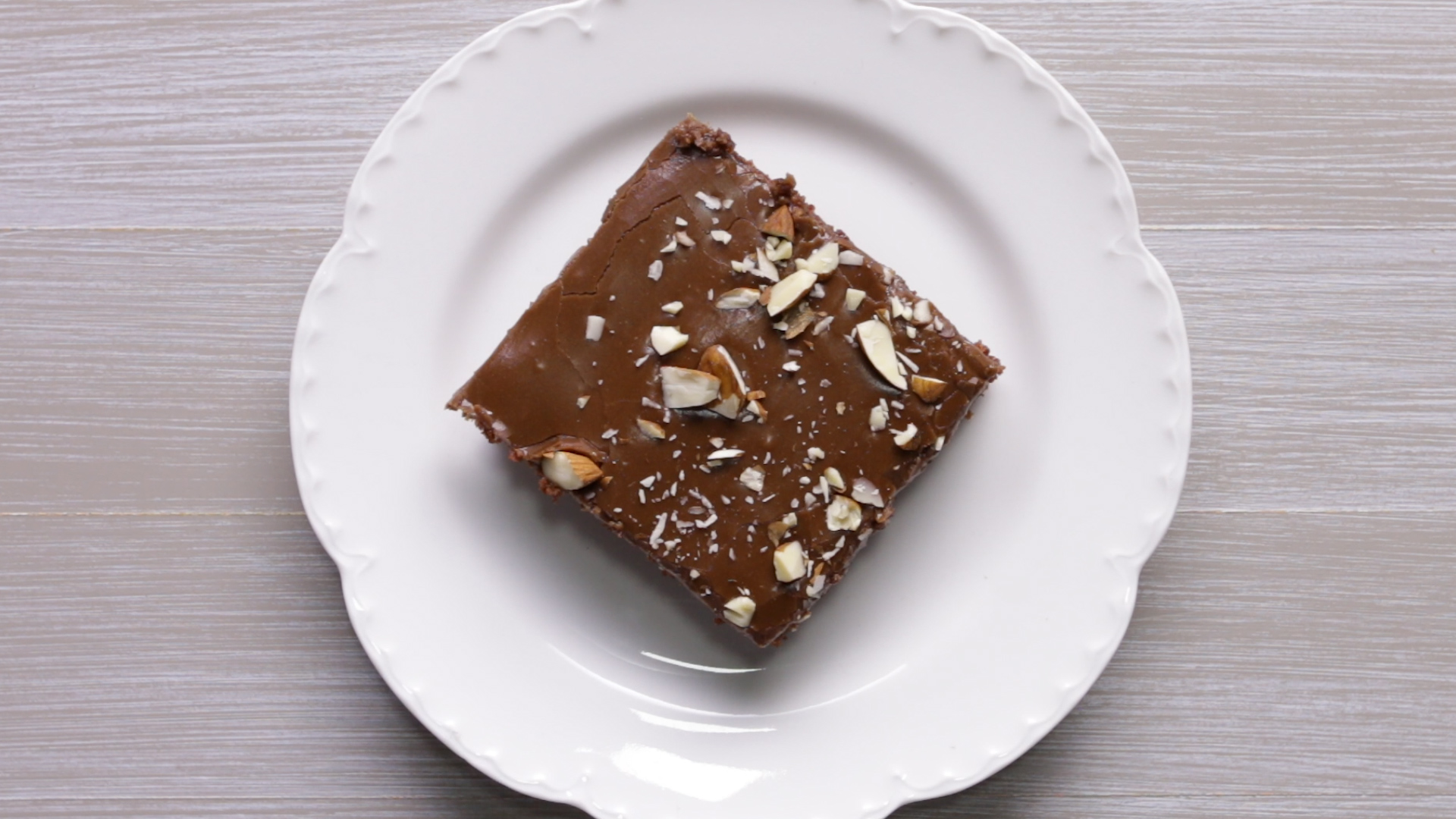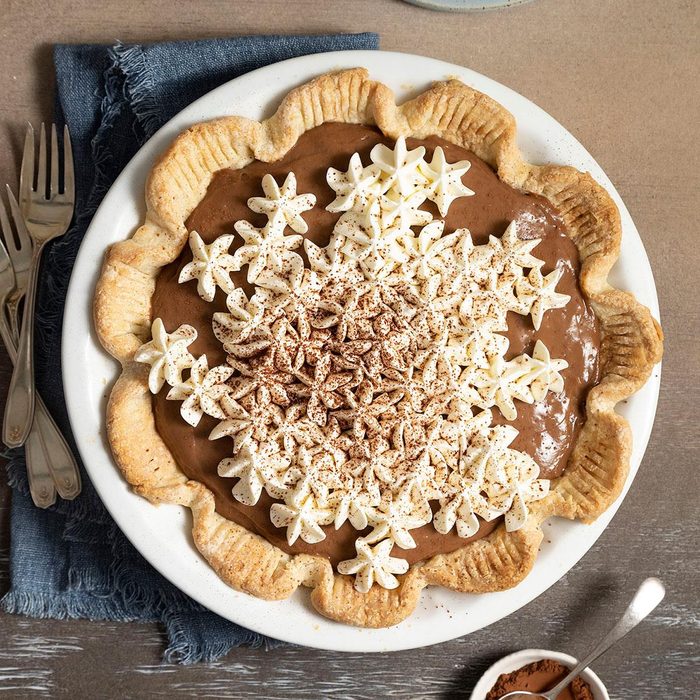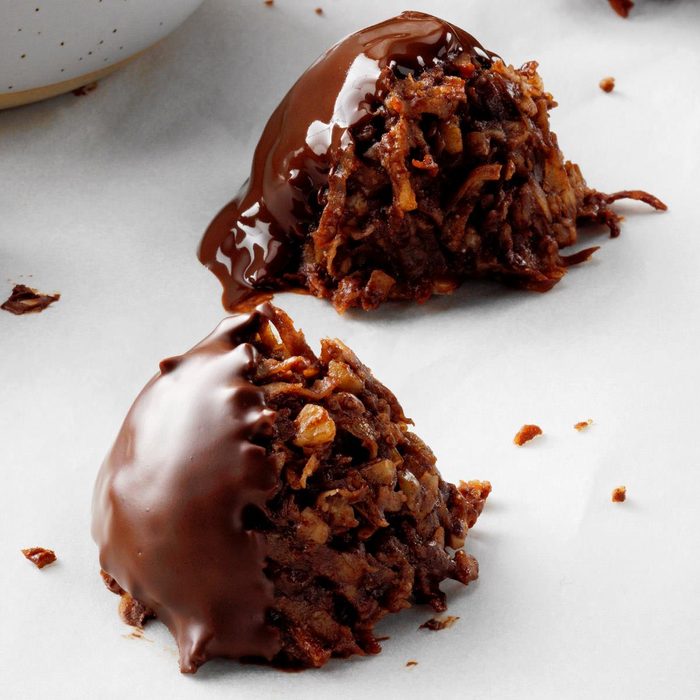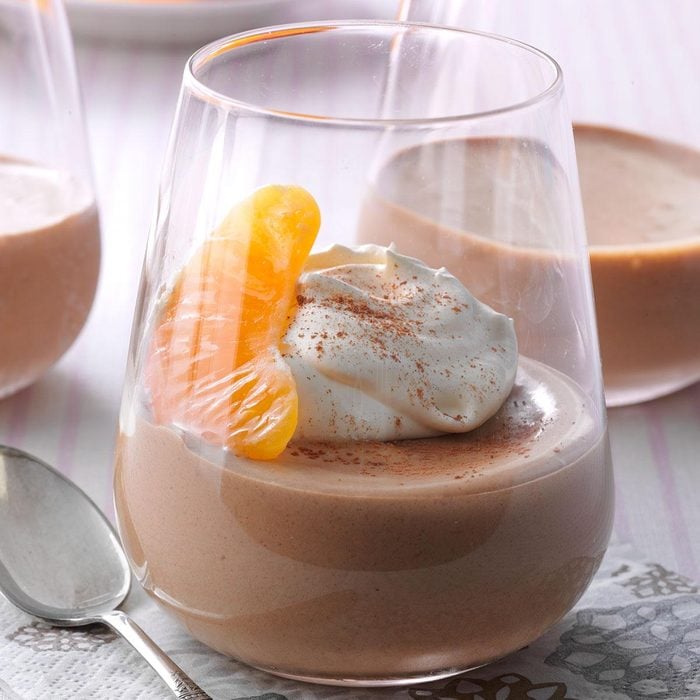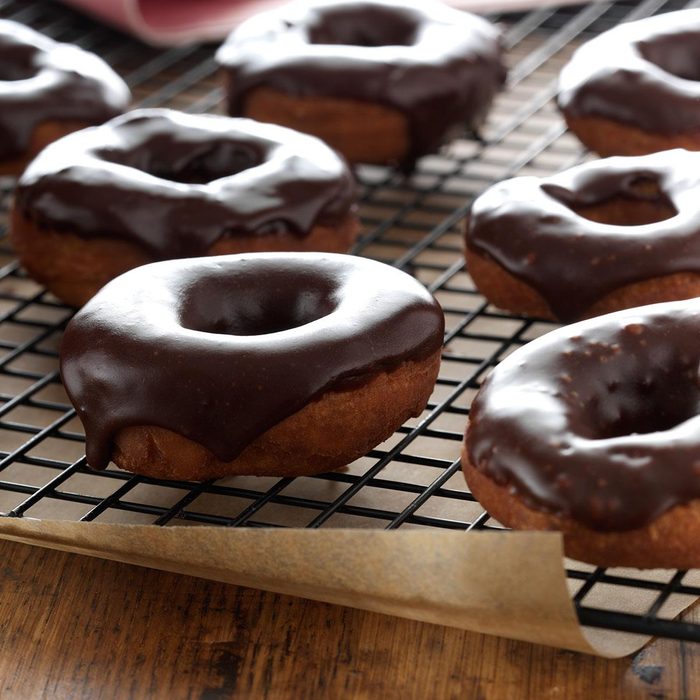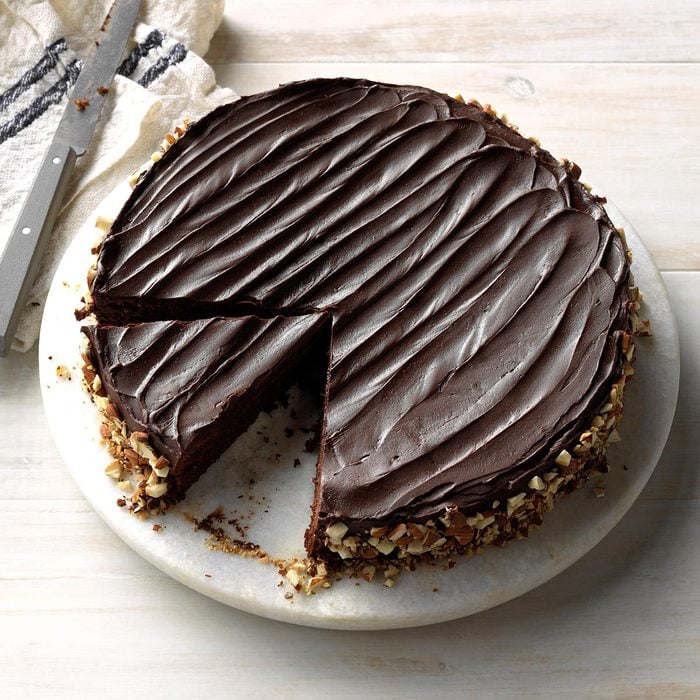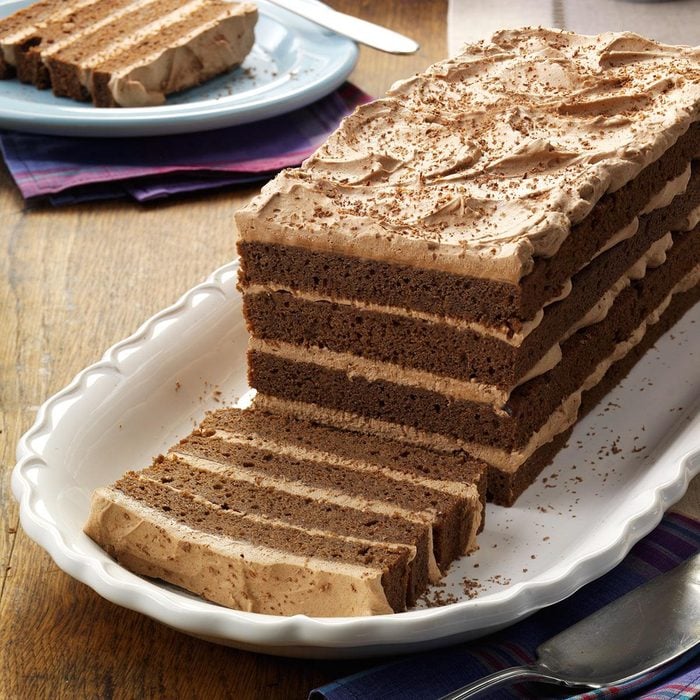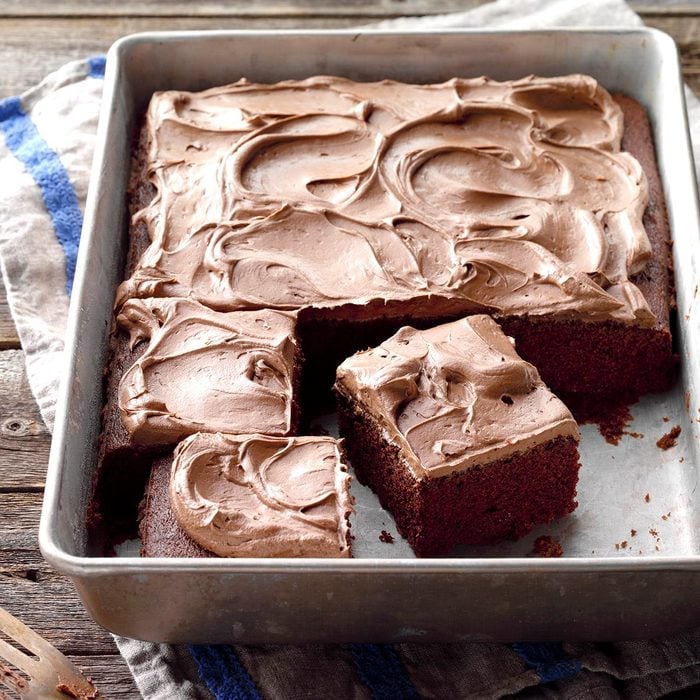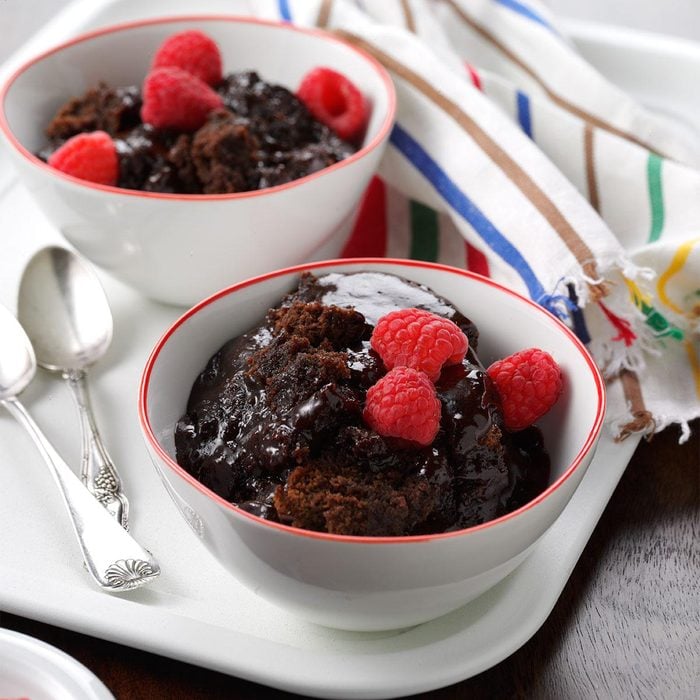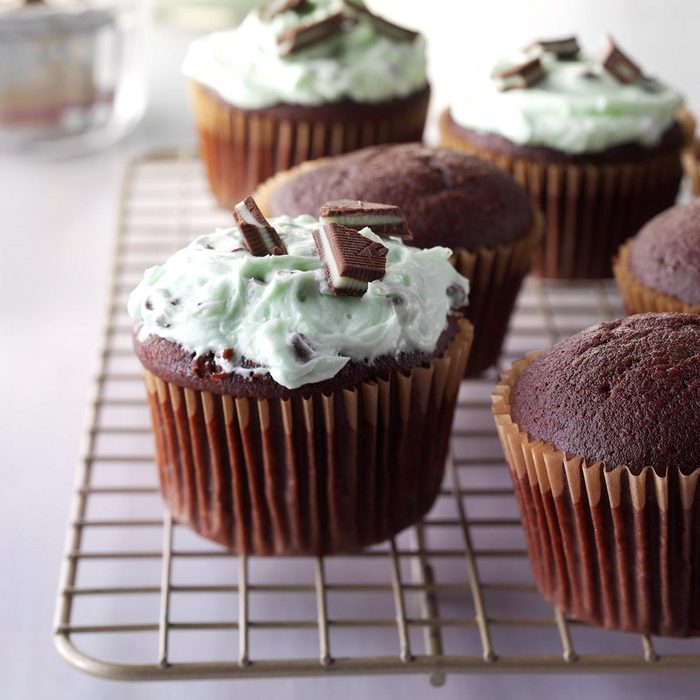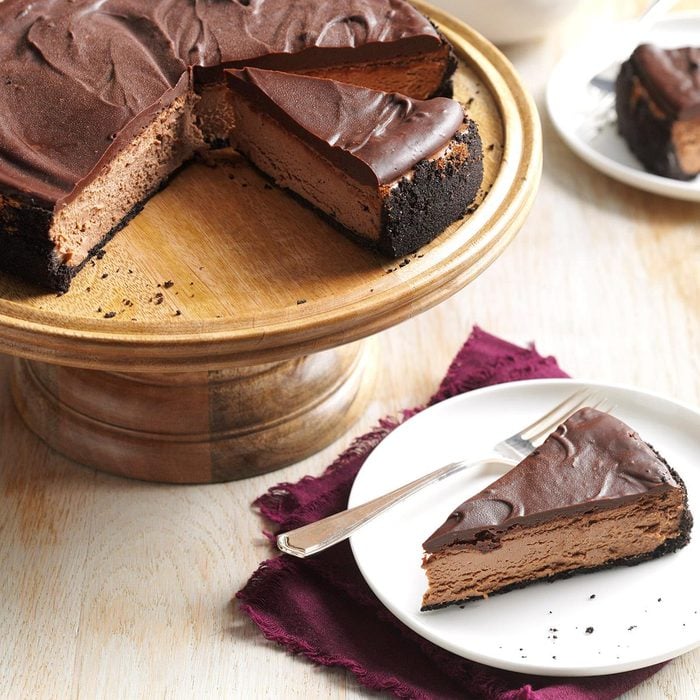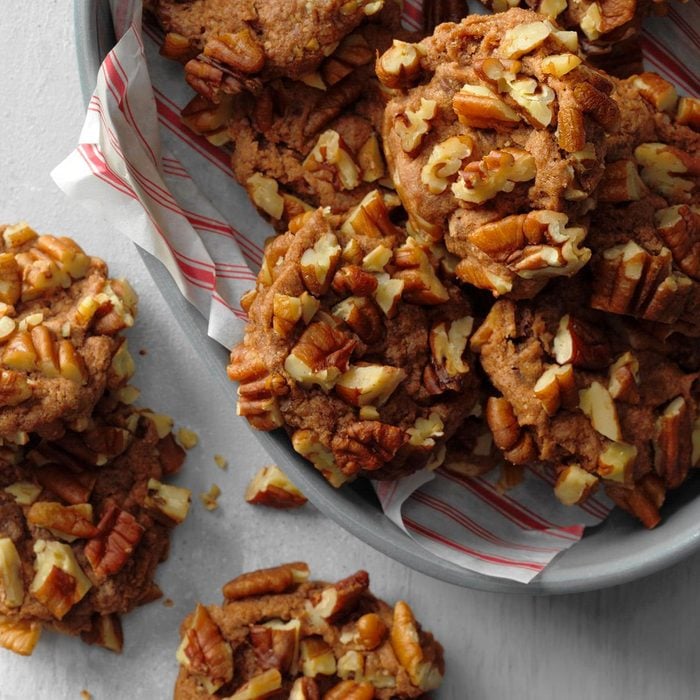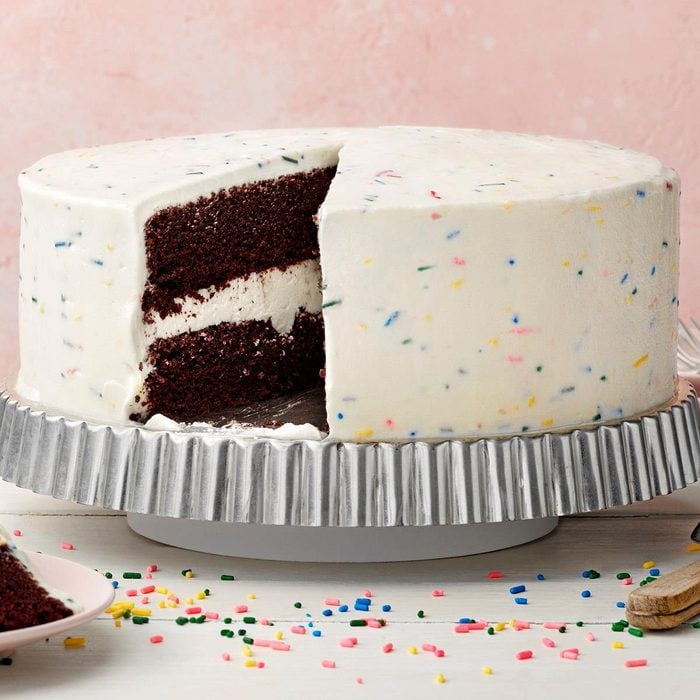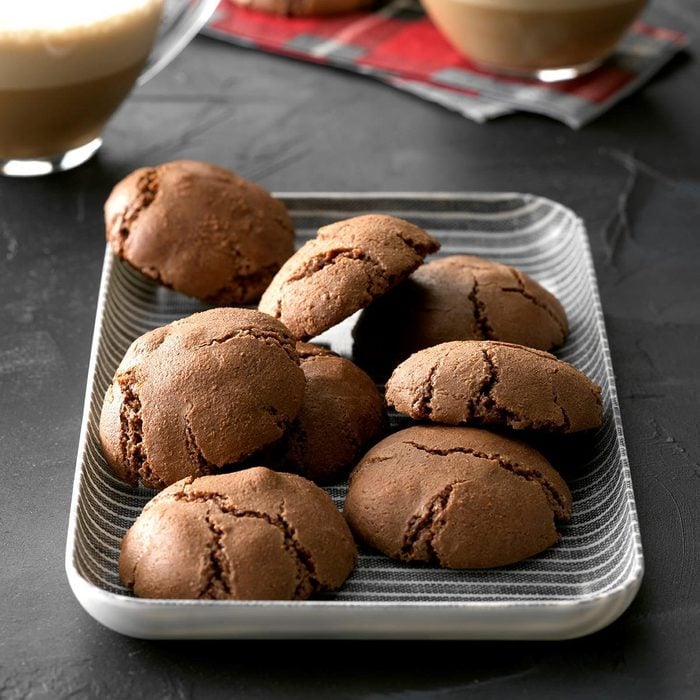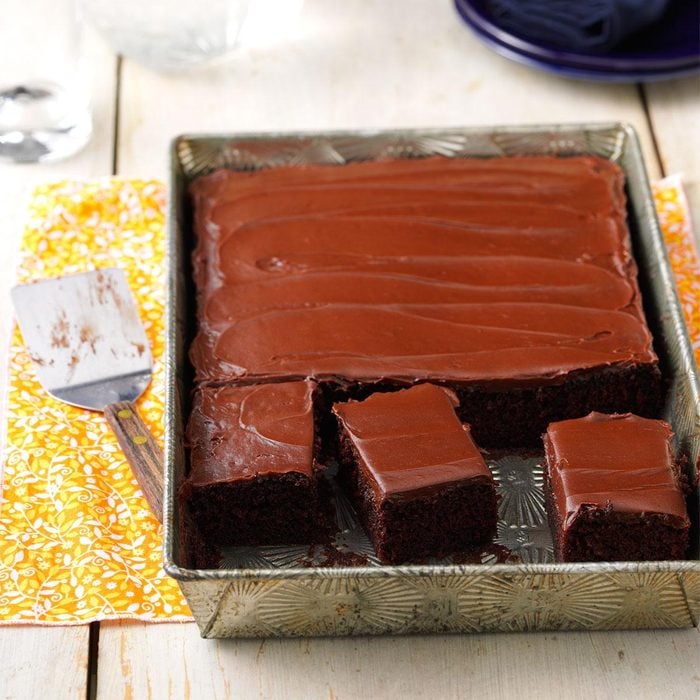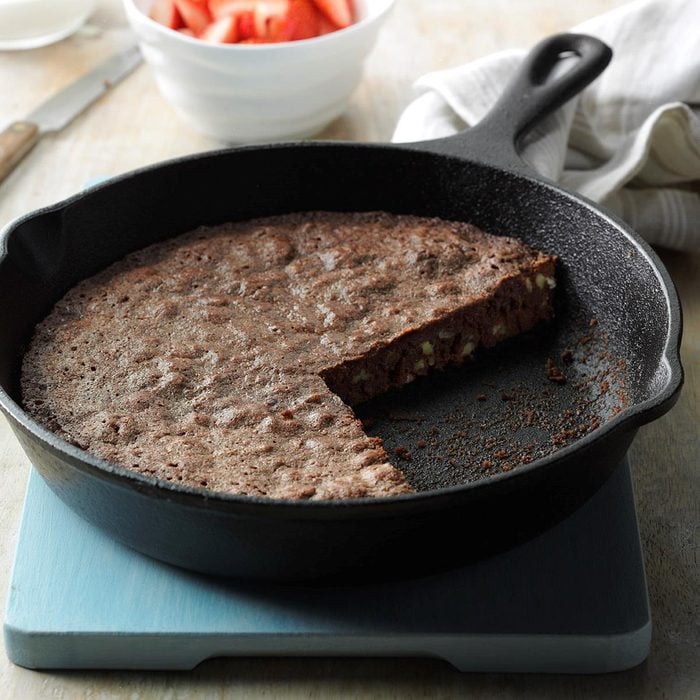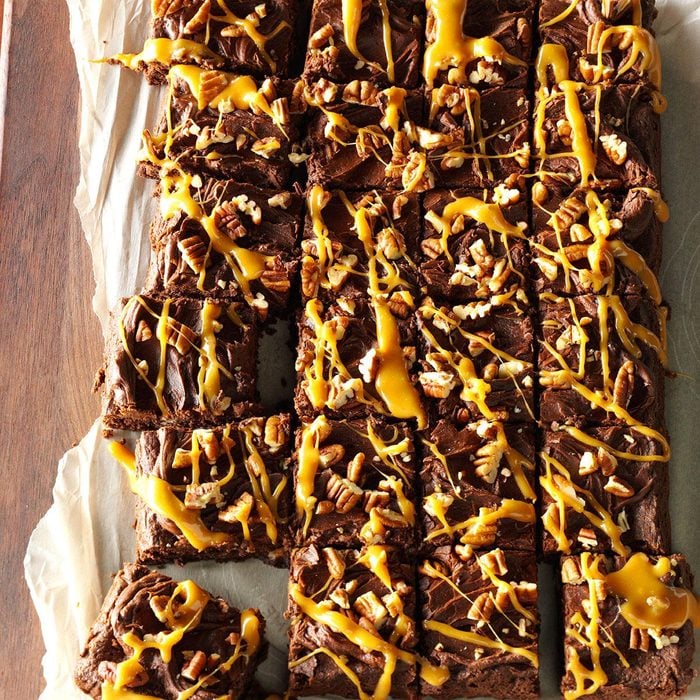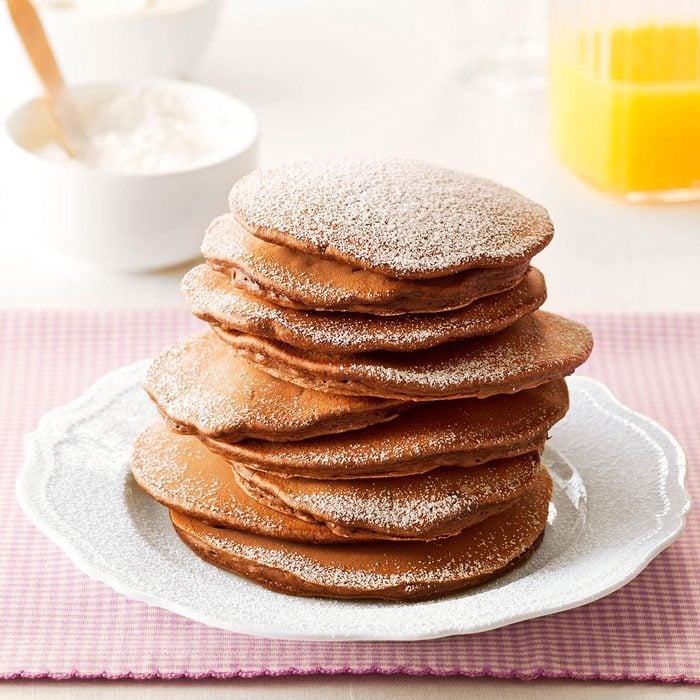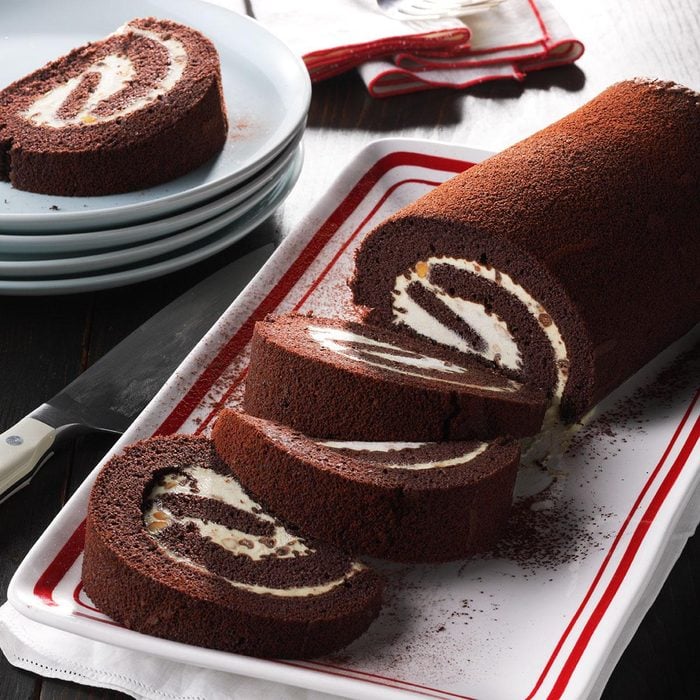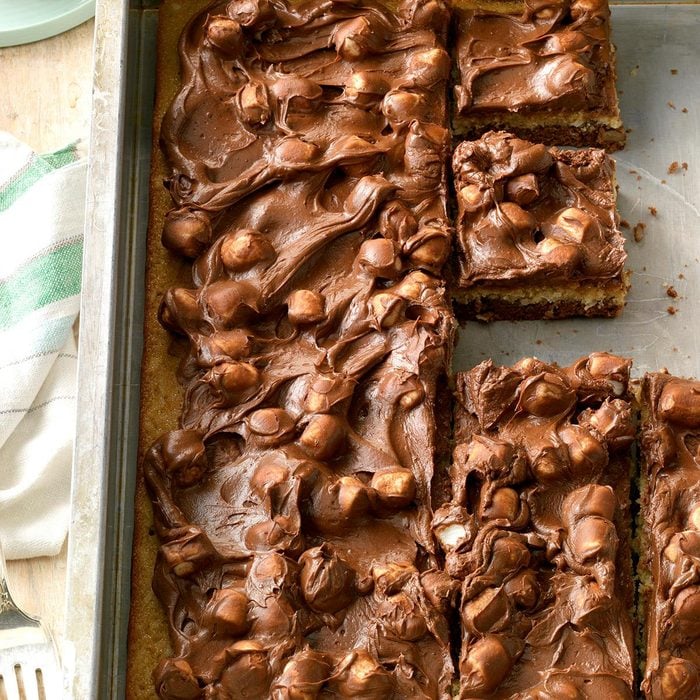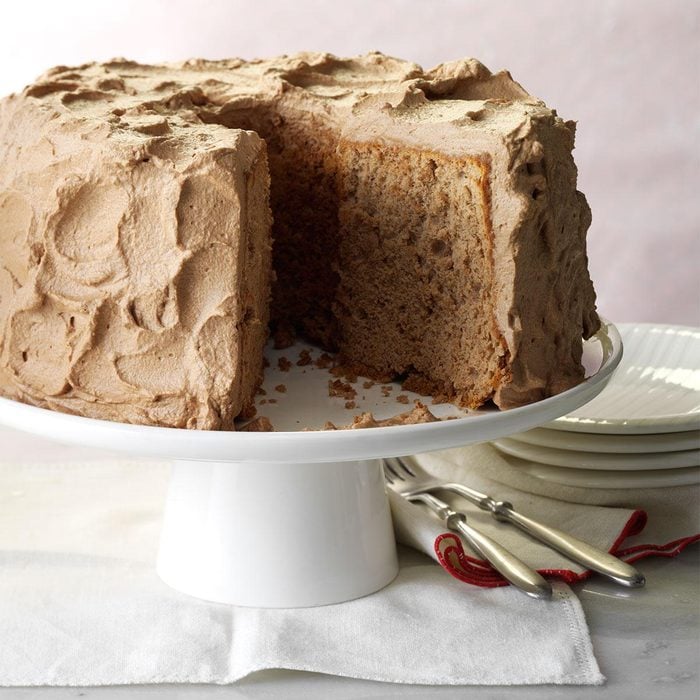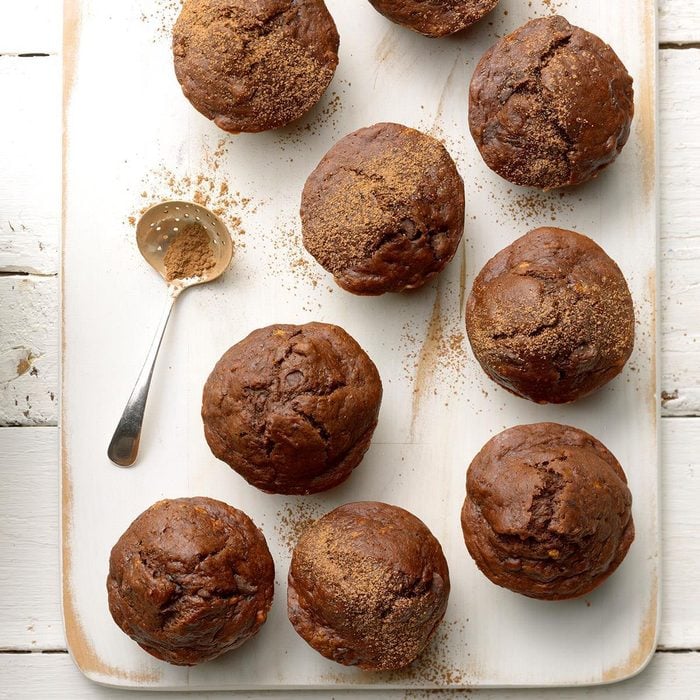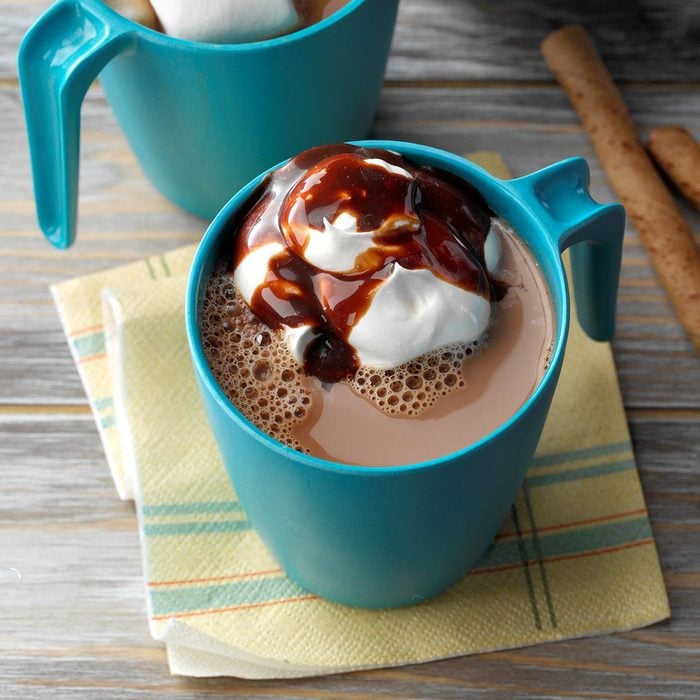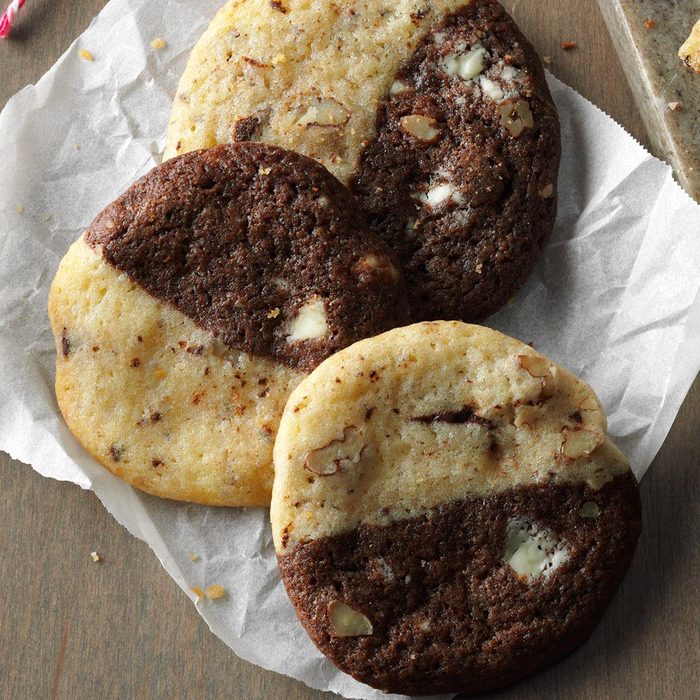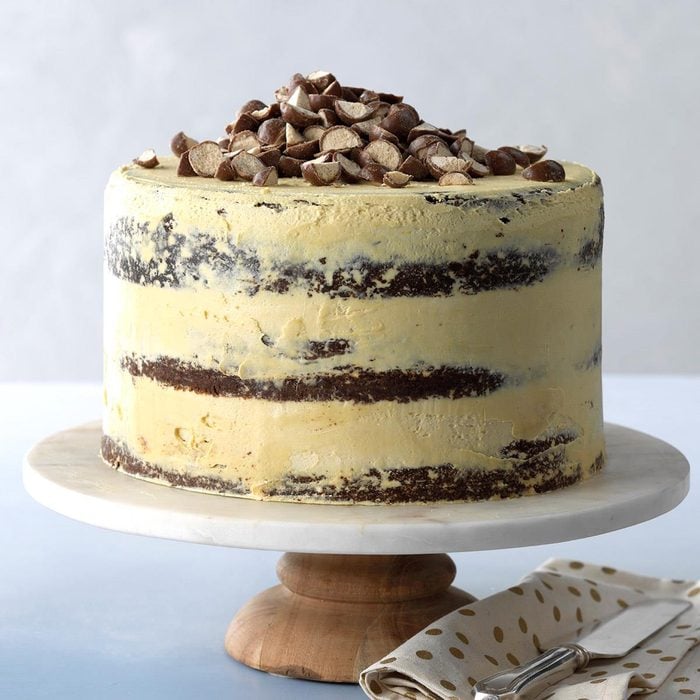Chocolate Buttermilk Squares
Every time I take these squares to a potluck, my pan comes back clean. At home, they vanish as fast as I make them. —Clarice Baker, Stromsburg, Nebraska
Go to Recipe
Layered Brownie DessertA tasty brownie is the base for layers of cream cheese and chocolate pudding in this make-ahead dessert. —Muriel Ledeboer, Oostburg, Wisconsin
Chocolate Cream PieWith a shortened baking window for the crust and a quickly cooked filling, our chocolate cream pie comes together with minimal hands-on time.
Chocolate Cannoli CakeHints of orange and coffee lend standout flavor to this elegant cannoli-inspired cake. A variation of this cake was a finalist in the Best Cake in Michigan contest. —Mary Bilyeu, Ann Arbor, Michigan
Chocolate Macadamia MacaroonsThis perfect macaroon has dark chocolate, chewy coconut and macadamia nuts and is dipped in chocolate—sinful and delicious! —Darlene Brenden, Salem, Oregon
Tangerine Chocolate SemifreddoWhen I wanted a new frozen treat for my family, I came up with this citrusy, chocolaty version of classic Italian semifreddo. For an elegant presentation on special occasions, top each serving with whipped cream, a tangerine section and baking cocoa. —Claire Cruce, Atlanta, Georgia
Delicious Potato DoughnutsI first tried these tasty treats at my sister's house and thought they were the best I'd ever had. They're easy to make, and the fudge frosting tops them off well. When I make them for friends, the recipe is always requested. —Pat Davis, Beulah, Michigan
Chocolate Espresso-Nut TorteI love chocolate and nuts, and they come together deliciously in this torte. Serve it with sweetened whipped cream or your favorite ice cream. —Thomas Faglon, Somerset, New Jersey
Chocolate Lover's Mousse TorteWith layer after luscious layer of creamy filling and cake, Chocolate Lover’s Mousse Torte proves irresistible every time. —Brenda Fisher, Stella, Missouri
Classic Chocolate CakeIf you need to learn how to make chocolate cake from scratch, this easy homemade chocolate cake recipe is a perfect place to start. It appeared on a can of Hershey's cocoa way back in 1943. I tried it, my boys liked it, and I've been making it ever since. —Betty Follas, Morgan Hill, California
Fudge CookiesDelight in the rich, fudgy goodness of these easy-to-make fudge cookies. Perfect for chocolate lovers, these cookies combine semisweet chocolate, unsweetened chocolate and cocoa powder for an intensely chocolaty treat.
Molten Mocha CakeWhen I first made my decadent slow-cooker chocolate cake, my husband's and daughter's expressions said it all. Now it's one of my daughter's favorites. Later, I gave one of these cakes to our next-door neighbors. Turns out their teenage son, who'd answered the door, ate the whole thing without telling anyone else about it! —Aimee Fortney, Fairview, Tennessee
Hot Chocolate TiramisuInstead of using coffee and rum, I let cinnamon shine in this tiramisu. It's best if eaten within two days—if it even lasts that long! —Cathy Geniti, Saratoga Springs, New York
Chocolate Almond CakeFluffy white homemade frosting tops this rich chocolate almond cake. Sliced toasted almonds on top add a little crunch. —Sherri Gentry, Dallas, Oregon
Truffle-Filled Cookie TartsI made chocolate truffles as a Christmas tradition for many years. I created this recipe to incorporate my truffles into the center of fudgy cookies. It was a hit with friends and family.—Patricia Harmon, Baden, Pennsylvania
Nana's Chocolate Cupcakes with Mint FrostingEven though Nana is no longer with us, her treats bring me so much joy every time
I bake them. For a more indulgent version, double the frosting and pile it on high! —Chekota Hunter, Cassville, Missouri
Napoleon CremesFor the annual Christmas open house we host, I set out a buffet with lots of food and candies like these lovely layered treats. They're so creamy, and with a green pistachio layer of pudding peeking out, they're very merry. —Gloria Jesswein, Niles, Michigan
Chocolate Truffle CheesecakeIf you delight in the taste of chocolate, then this is the cheesecake for you. Every creamy bite melts in your mouth. It's so impressive yet not difficult to prepare-I whip up this dessert each time I want a yummy treat for my family, friends or co-workers. —Mary Jones, Cumberland, Maine
Brownie Bourbon BitesChocolate and chopped pecans flavor these simple, spirited treats. Make a double batch so you can give some as gifts and savor the rest!—Paula Kirchenbauer, Newton, New Jersey
Moist Chocolate CakeThis moist chocolate cake recipe with coffee reminds me of my grandmother because it was one of her specialties. I bake it often for family parties, and it always brings back fond memories. The cake is light and airy with a delicious chocolate taste. This recipe is a keeper! —Patricia Kreitz, Richland, Pennsylvania
Chocolate AmarettiThese classic almond paste cookies are like ones you'd find in an Italian bakery. My husband and children are always excited when I include these goodies in my holiday baking lineup. —Kathy Long, Whitefish Bay, Wisconsin
One-Bowl Chocolate CakeIt's quick, it's tasty and there's minimal cleanup: That's one-bowl chocolate cake in a nutshell! It comes together in 15 minutes, and it'll be ready for icing by the time you've finished dinner.
Skillet BrowniesSkillet brownies boast a rich, chocolaty flavor and the perfect velvety, fudgy texture. Serve them warm with whipped cream or strawberries, and you'll be more than pleased.
Turtle BrowniesChocolate, caramel and pecans —how can you go wrong with turtle brownies? This recipe is quick and easy to make and might just become one of your new favorites.
Mini-Chip Cocoa PancakesWhip up a batch of cocoa pancakes dotted with mini chocolate chips to satisfy your chocolate cravings first thing in the morning. Yum! —Joyce Moynihan, Lakeville, Minnesota
Hot Fudge CakeHere's a wonderful way to top off a great meal—a rich chocolaty cake that's not overly sweet. Mom served it with a scoop of ice cream or cream poured over. I'd always have room for a serving of Hot Fudge Cake.
—Vera Reid, Laramie, Wyoming
Peanut Butter-Chocolate Cake RollsWho knew something this impressive could start with a cake mix! The mini chocolate chips add a tasty crunch to each slice. —Tammy Rex, New Tripoli, Pennsylvania
Chocolate Maple BarsMy family runs a maple syrup operation, and I'm always looking for new ways to incorporate maple syrup into my cooking and baking. These bars are delicious! —Cathy Schumacher, Alto, Michigan
Chocolate Angel CakeWhen I was married in 1944, I could barely boil water. My dear mother-in-law taught me her specialty—making the lightest angel food cakes ever. This chocolate version is an easy, impressive treat. —Joyce Shiffler, Colorado Springs, Colorado
Egg-Free Double Chocolate Banana MuffinsThese double chocolate banana muffins make the best use of any brown bananas you have left in the fruit bowl. Mash them into our chocolate muffin mix and you have a delightful snack in under half an hour.
Favorite Hot ChocolateYou need just a few basic ingredients to stir up this spirit-warming sipper. The comforting beverage is smooth and not too sweet, making it just right for cozy chilly nights. —Flo Snodderly, North Vernon, Indiana. If you like this, then you must try
frozen hot chocolate.
Frosted BrowniesThese Frosted Brownies have an amazing chocolate frosting that you'll adore. Sit back and savor every bit of the chewy brownie base and rich, fudgy frosting.
Double DelightsYou get the best of both worlds with these chocolate and vanilla cookies. They're an appealing addition to any cookie tray. I usually serve them at the holidays, when they're often the first cookies to disappear, but you can have them any time of year. —Ruth Ann Stelfox, Raymond, Alberta
Chocolate Beet CakeThe first time I baked this cake, my son loved its moistness, and he couldn't taste the beets.—Peggy Van Arsdale, Crosswicks, New Jersey
Warm Chocolate Melting CupsThese little cakes have become a favorite of our guests. They are always surprised that such a chocolaty dessert is so light—less than 200 calories apiece! —Kissa Vaughn, Troy, Texas
Malted Chocolate & Stout Layer CakeIf you want a dessert that will take the cake at a St. Patrick's Day celebration, look no further! The rich chocolate cake is incredibly moist and has a nice malt flavor that's perfectly complemented by the Irish cream frosting. —Jennifer Wayland, Morris Plains, New Jersey





















